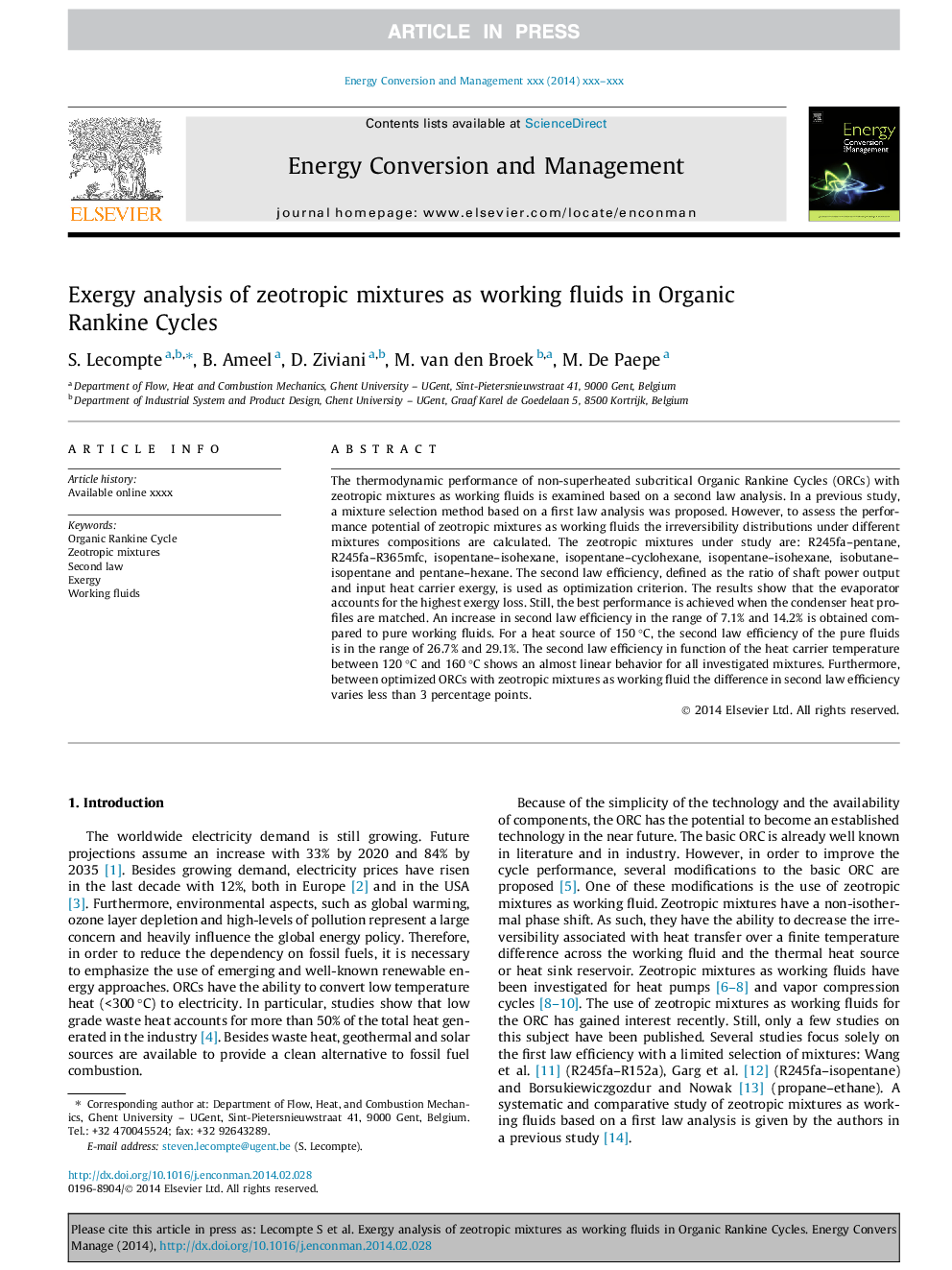| Article ID | Journal | Published Year | Pages | File Type |
|---|---|---|---|---|
| 7164646 | Energy Conversion and Management | 2014 | 13 Pages |
Abstract
The thermodynamic performance of non-superheated subcritical Organic Rankine Cycles (ORCs) with zeotropic mixtures as working fluids is examined based on a second law analysis. In a previous study, a mixture selection method based on a first law analysis was proposed. However, to assess the performance potential of zeotropic mixtures as working fluids the irreversibility distributions under different mixtures compositions are calculated. The zeotropic mixtures under study are: R245fa-pentane, R245fa-R365mfc, isopentane-isohexane, isopentane-cyclohexane, isopentane-isohexane, isobutane-isopentane and pentane-hexane. The second law efficiency, defined as the ratio of shaft power output and input heat carrier exergy, is used as optimization criterion. The results show that the evaporator accounts for the highest exergy loss. Still, the best performance is achieved when the condenser heat profiles are matched. An increase in second law efficiency in the range of 7.1% and 14.2% is obtained compared to pure working fluids. For a heat source of 150 °C, the second law efficiency of the pure fluids is in the range of 26.7% and 29.1%. The second law efficiency in function of the heat carrier temperature between 120 °C and 160 °C shows an almost linear behavior for all investigated mixtures. Furthermore, between optimized ORCs with zeotropic mixtures as working fluid the difference in second law efficiency varies less than 3 percentage points.
Related Topics
Physical Sciences and Engineering
Energy
Energy (General)
Authors
S. Lecompte, B. Ameel, D. Ziviani, M. van den Broek, M. De Paepe,
